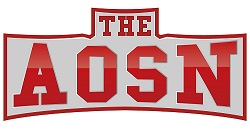Post by Guest Contributor Felipe E. Zatarain
This morning, I used one of many handy apps on my phone to help me circumvent the worst of the morning traffic. As I approached my destination, I noticed a familiar sight, the checkered flag announcing my destination is near. This got me thinking… when and where did the checkered flag start its glorious distinction of announcing a finish?
There are a few theories as to the origin of the checkered flag:
Get your grub on: In the 1800’s, people in the mid-west loved horse racing. Events were held and whole communities participated. During these events, while the racing was going on, others would set-up tables and spreads of food. Well, it turns out checkered table cloths were quite popular. The theory goes that once the spread was ready, they would wave a table cloth to announce the end of race time and the start of eating.
Pedal to the end: Around 1860, in France, there were quite a few bicycle races. They were quite popular as the automobile had yet to be invented. The theory goes that some people actually wore checkers to help the riders determine the course. It may have gone as far as someone dressing in a checker suit to mark the finish of the race.
Getting dirty: Another theory as to the origin of the checkered flag is from early automobile races on dirt. It is possible the checkers of the flag made it more visible in the dust.
First photographic evidence: In 1906, the Vanderbilt Cup was held in Long Island, New York. This early automobile race has the first photo of a checkered flag being waved for the winner (shown above). It is not known if this was the first use.
Whatever the actual origin of the checkered flag is, we do know one thing. Seeing those little black and white squares is a welcome sight. Be it at the end of a race or the end of your morning commute.
Featured Photo: VanderbiltCupRaces.com
